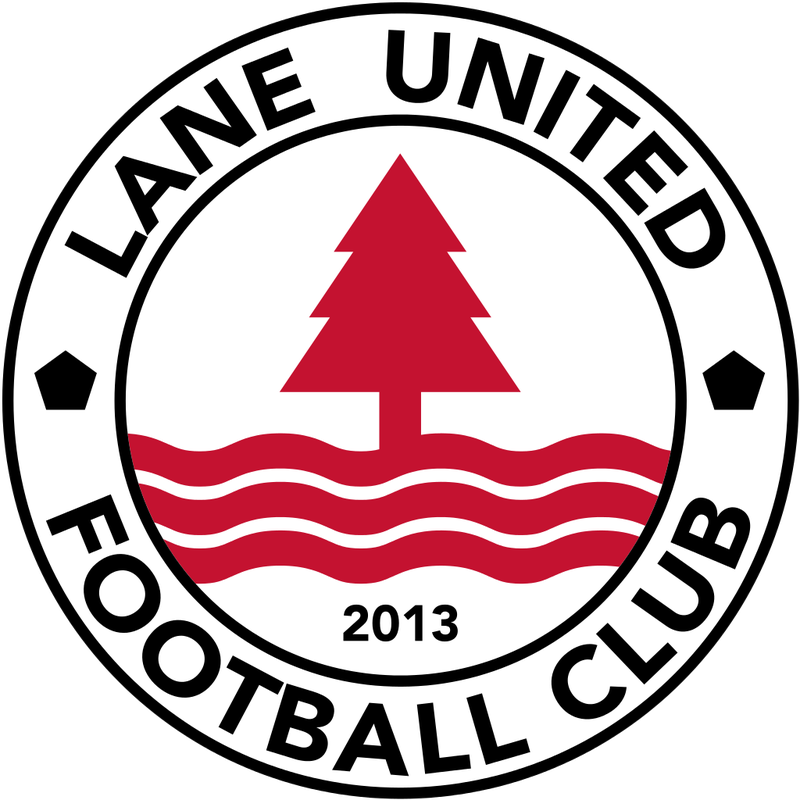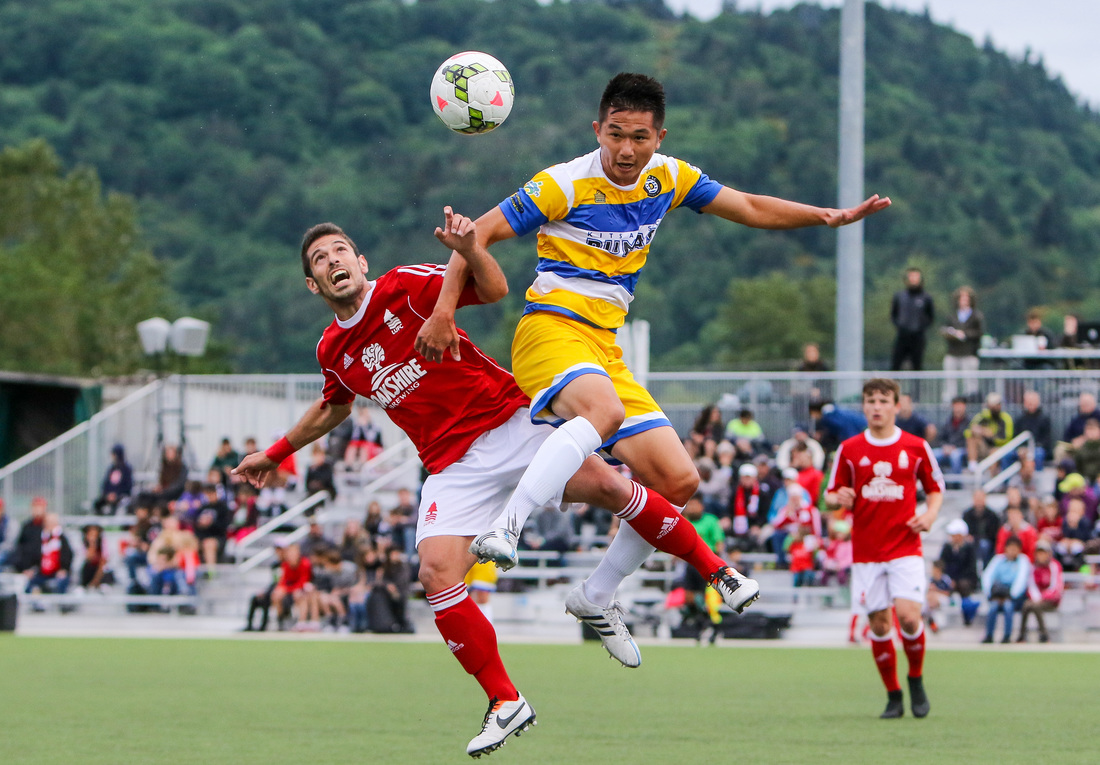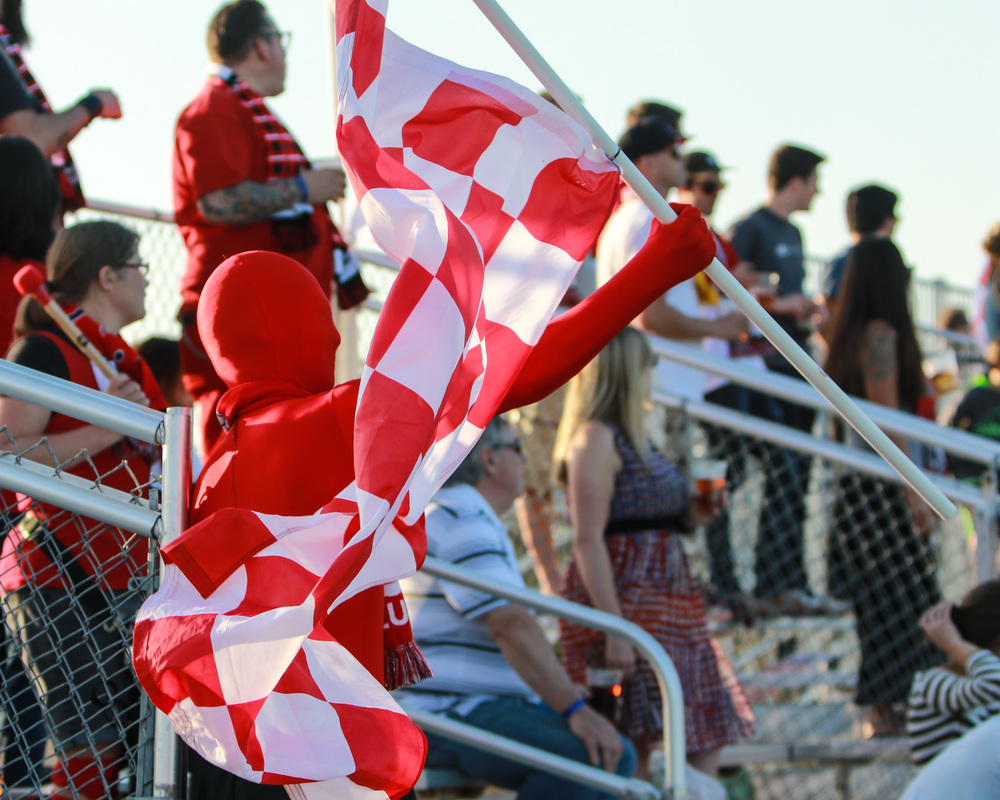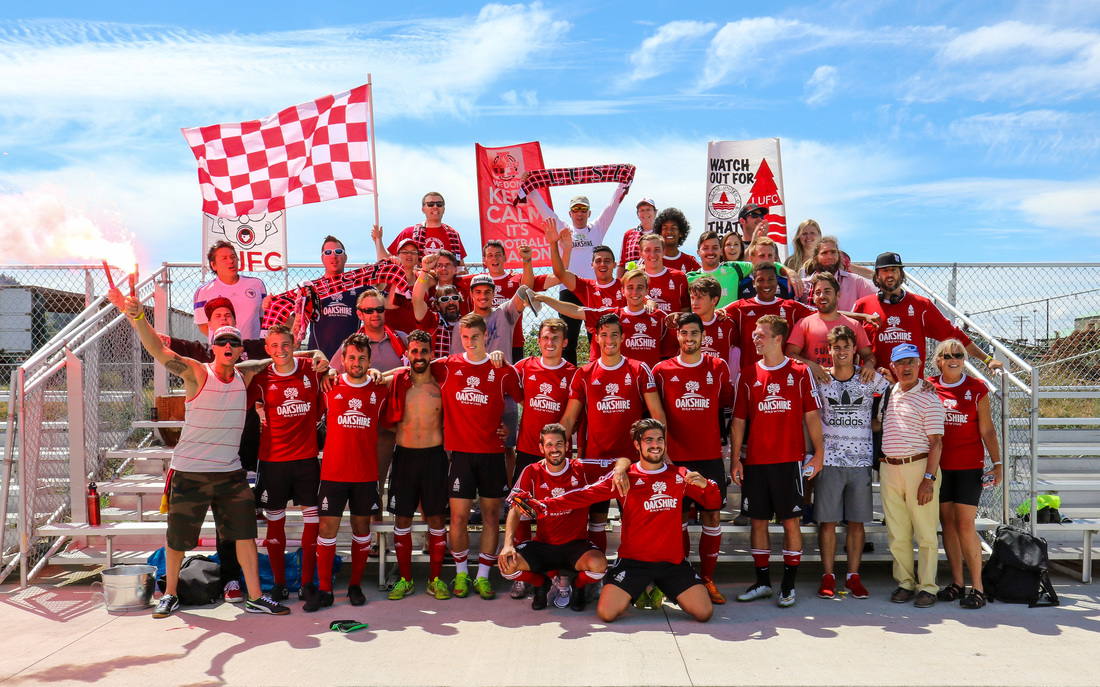|
Hello again, and welcome back to the American Pyramid. If it's your first time reading this blog, welcome! The point of the American Pyramid is to draw attention to what's going on in the lower levels of American soccer. Who's doing what where, and how you can get involved and support your local team. I had the pleasure of interviewing Dave Galas of Lane United FC in Eugene, Oregon. To preface, I've been keeping tabs on Lane United since they were first formed thanks to the online soccer forum I'm a part of, and it's been fun to watch them grow and actually get to talk to Dave to find out more about what's happening in Eugene. It's a long interview, but completely worth your time. Without further ado, an interview with Dave Galas. Photo Credit: John D. Sperry American Pyramid: Tell me a little bit about yourself. Who you are, where you're from, what your role is with Lane United. Dave Galas: I'm the Managing Director at Lane United FC. Moved to Eugene in 1990 to finish college, spent some time in Colorado and Portland then came back to Eugene in 2000 when my wife started graduate school. Eugene is definitely home. AP: When did you first get interested in soccer in general and running a soccer team in particular? Was there a certain event that got you into the sport, or have you always been into soccer? DG: Our family moved to Geneva, Switzerland in 1977. As a 7-year old moving into a soccer culture, there really wasn’t much doubt that I’d become a fan of the game. Everything we did outside of class as kids revolved around soccer. The World Cup was right around the corner, and European Champions, Liverpool FC, were losing their star striker, Kevin Keegan, to Hamburg and replacing him with relatively unknown Kenny Dalglish from Celtic. There was plenty of soccer in the media all around me at that time. I was hooked. AP: Can you recap the history of Lane United for us? Basically, what's the teams 'origin story?' DG: We have a great soccer culture here, so I always thought a team would do well, but no one had tried it. I had never considered trying it myself, but I reached out to some of the people who were trying to save Civic Stadium from becoming a big box store to see if I could help. I was told that they really had a chicken/egg problem. They were convinced they could save the stadium if they had a team to play there, but they couldn’t get a team to move here without having a stadium secured. My brother, John, has been in soccer his whole professional life, so I picked his brain a bit. We decided on a name, I worked on some logo ideas, ran them past designer friends of mine, floated the idea to some soccer friends of mine, got a small sponsorship, passed the hat in the community, and the next thing I knew I had successfully demonstrated to a few local people that there was enough interest and support to invest in the club. I then went about getting our investors vetted by the PDL and tried to get an exhibition match set up. On July 18, 2013, we were unveiled as a new PDL franchise, and played an exhibition match against the Timbers U-23s. We lost 3-0. Photo Credit: John D. Sperry AP: Now, a little backstory. Lane United has secured the rights to renovate Civic Field in Eugene, OR, an old Depression Era sports stadium. Right after getting everything lined up to begin, Civic Stadium burned down. What was that like? How are you moving forward in your search for a new venue? DG: Yeah, like I mentioned, Civic Stadium was really the first spark for this project. The site was owned by the school district, and once our minor league Eugene Emeralds moved to the University of Oregon’s facility, the district regarded it as surplus and put it up for sale. The group I had originally contacted about the stadium had been so far unable to acquire the stadium, but the city stepped in with a contingency bid, and a new non-profit group, the Eugene Civic Alliance got involved. I have been working with the ECA, and amazingly we were able to raise the money necessary to buy the stadium outright. There were great plans for renovating the stadium and building a youth sports facility on the site, but the fire changed those plans a bit. The new design is being developed, but the intended use of the site hasn’t changed. There will be a stadium that Lane United will be the anchor tenant of, and there will be a much-needed fieldhouse for Kidsports, which serves 14,000 kids in our community. It was really hard to watch that old stadium burn down. It really was irreplaceable, but emotions aside, the site is the most attractive piece of this whole thing. By every metric that indicates success for a stadium, it is perfect. It has a great neighborhood feel with amazing walkability, access to bike paths, and public transit. From a game day-experience standpoint, I can’t wait for the first game at the new Civic. AP: Are you still hopeful that Lane United has a future in USL with a new Civic Field, especially since the league is applying for Division 2 status in 2017? Lane United certainly has a future a the new Civic, and we still plan on that being professional soccer. With the requirements for USSF Division 2 status, it remains to be seen if that means USL or another league. AP: What do you think makes soccer such a communal sport compared to other sports in the USA? And by extension, is that part of soccers appeal in the States? DG: I don’t know that soccer is necessarily more communal than football, at least here in Eugene where the tailgating culture is pretty vibrant. What I think soccer has going for it by comparison though, is that it is much more approachable. Ticket prices are much more reasonable, the games only last a couple hours, and you have entire families who have played or are still playing the game. The fact that here in the northwest we have embraced many of the european traditions that focus on the town square and foot traffic to and from games means that the communal elements happen in town, not in a remote parking lot that sits vacant 358 days a year. That helps associate the game with the existing infrastructure and community. AP: This question is from one of my readers, Rachel P. How did you go about finding and recruiting players once the team first started? DG: Easy. I hired my brother as Sporting Director/Head Coach. He had recently moved to the Timbers/Thorns organization after a few years at the Real Salt Lake Academy in Arizona. He got busy scouting, calling former players, calling college coaches, etc. We also held open tryouts and got a half-dozen quality local players that way. AP:Tell me a little bit about the league you're in, the Premier Development League. What kind of advantages does it have over other leagues that you may have looked at when forming the team? DG: The PDL has been around for 20 years or so and is comprised of over 65 teams nationwide. It’s similar to the NPSL in that it’s an NCAA-compliant U-23 summer league, but the NPSL doesn’t have a significant presence in the Northwest, so that wasn’t really an option for us. Two big reasons we wanted to be in the PDL were the competition and its affiliation. The Whitecaps have since gone USL, but when we joined there were three MLS U-23 teams in our division with the Whitecaps, the Sounders, and the Timbers as well as Kitsap and Victoria who had recently made the final four. The NW Division is one of the strongest in the country and we wanted to be part of that. Furthermore, our plan was always to move up to the USL once were settled at Civic Stadium, so being part of the USL fold from the beginning, and working with a lot of the same people, made a lot of sense. AP: Does the PDL have a long term vision for their league and your teams role in that future? DG: With the USL/MLS affiliation that has come about, I think the PDL is positioned nicely to be a key part of that ladder - the highest profile development league that will feed directly to the pro ranks of the USL and MLS. I know the league wants to grow; especially into regions where they have fewer teams where travel costs are a real burden for the existing teams. Photo Credit: John D. Sperry
AP: Why should the average soccer fan care about a team in Eugene, Oregon? DG: We’re independent and we were started by fans in the community. I think the average fan should be inspired by teams like Lane United, Detroit City, etc. and realize that to have something you can be proud of in your community it doesn’t need to be imported by an MLS owner. To enjoy the beautiful game, take the family out for some entertainment, have a beer with friends, sing, chant, etc. it just takes some energy, organization, and a vision for what you want. I threw something out there and the community responded. Without our Charter Members, this club wouldn’t exist, but it’s a formula that I know can work in other places. AP: Cast a vision for me: Where do you see Lane United in 5 years? DG: Pro soccer in Civic Stadium. AP: Time for some Bonus Questions: Who's your pick to win the MLS Cup this year? DG: Season ticket holder since the USL days, so I have to say the Timbers. Hopefully they didn't use up all their luck in that shootout against KC. AP: What's your favorite book, regardless of genre? DG: Couldn’t say. Too many good books in the world. For the purposes of this interview, I’ll go with "Surely Your Joking, Mr. Feynman” by Richard Feynman. Inspiring stories about being fearlessly and obsessively curious, analytical, and adventurous. AP: Who's your favorite current soccer player? DG: Another tough one. Messi is amazing, maybe the best ever. Suarez is great. Coutinho is developing into something special. I have to say, though, I love watching David Silva play - reminds me a bit of Cruijff. AP: Do you have a favorite soccer book, movie or podcast? DG: “The Miracle of Castel di Sangro” is a fantastically entertaining read, but I would say “Inverting the Pyramid” should be required reading for every fan of the game. AP: What's your favorite league and/or team to watch? DG: I love watching La Liga, but second to Lane United, my team is Liverpool. AP:Where can people find out more about yourself and the team? DG: laneunitedfc.com You’ll find links there to Twitter, Facebook, Instagram, etc. You can also sign up there for our weekly newsletter. AP: What would you like to say to the people reading this article about why they should get behind the lower levels of American soccer in general, and Lane United in particular? DG: That’s a tough one. The reasons are obvious to the supporters who go to the games. It’s affordable entertainment, it’s loads of fun, the level of soccer is surprisingly high, and it brings community together. As for reasons to support the idea of a massive pyramid of soccer clubs in this country, most of which reside at the base of said pyramid, it’s a hard sell. In most countries in the world you can offer the dream of promotion. Your fans can get behind the local club knowing it’s a meritocracy and the scale isn’t tilted in favor of a cartel controlling the limited supply with a large demand. Here it’s different, and it’s a shame. Fundamentally, the reason to support local soccer is that it truly is a beautiful game that is cross-cultural like no other, and in my experience whatever you can do to bring people together is worth it. Give people the opportunity to sing together, and they will. AP: Thanks for your time in doing this interview with us Dave. As always, don't forget to like the American Pyramid on Facebook at facebook.com/americanpyramid. And don't forget, comment with any questions you'd like to see asked, whatever it might be, and who knows? Maybe you'll see it in the next interview. Until next time. |
Categories
All
PartnersArchives
February 2021
|





 RSS Feed
RSS Feed
